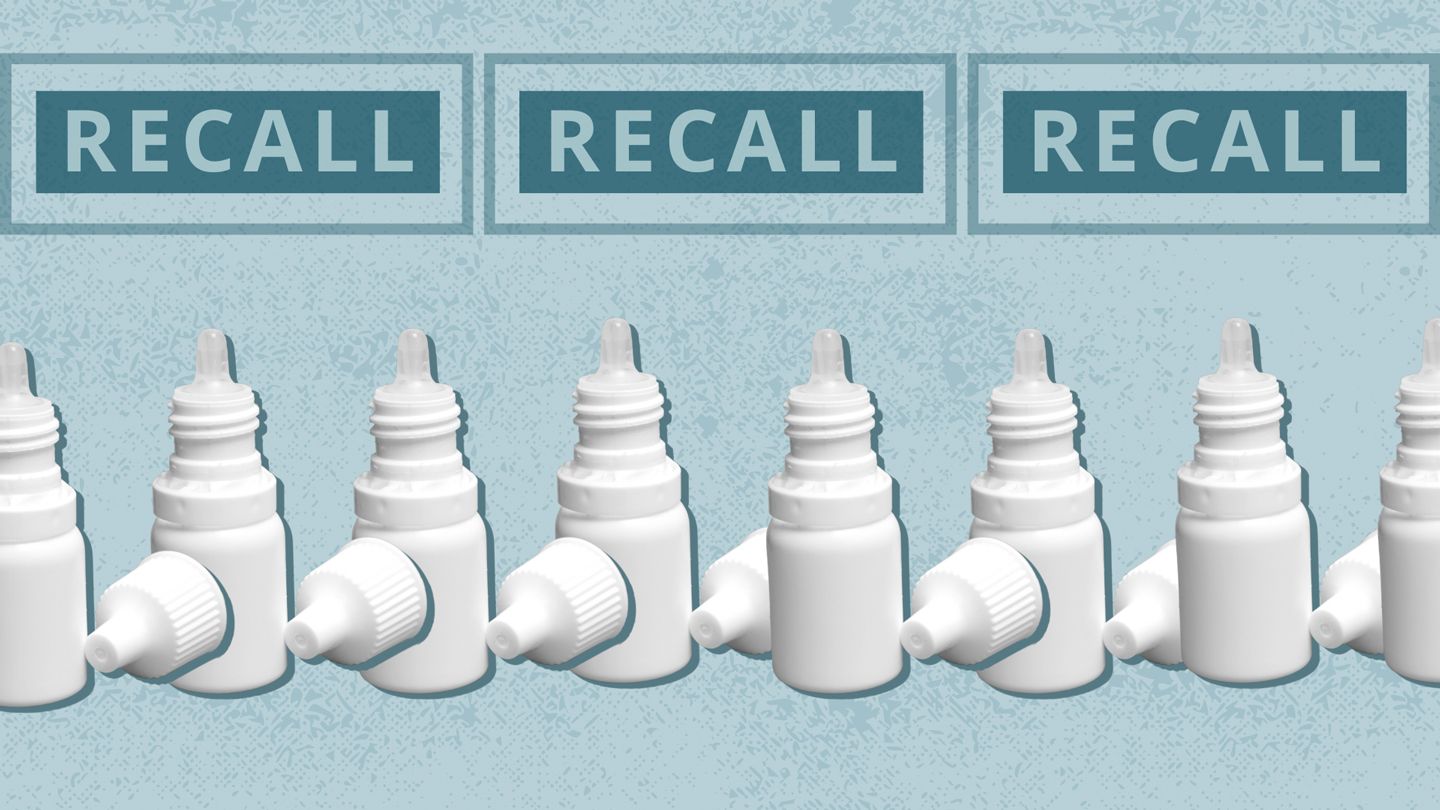Introduction
Wearing contact lenses is a popular choice for many individuals seeking to improve their vision and convenience. However, contact lens wear can sometimes lead to a condition known as dry eye, which can be uncomfortable and potentially harmful if left untreated. Understanding the symptoms of dry eye associated with contact lens wear is crucial for maintaining healthy eyes and ensuring optimal visual comfort.
Understanding Dry Eye
Dry eye, also known as keratoconjunctivitis sicca, is a common condition that occurs when the eyes do not produce enough tears or when the tears evaporate too quickly. This imbalance in the tear film can lead to irritation, discomfort, and visual disturbances. Contact lens wearers are particularly susceptible to dry eye due to the lenses' tendency to disrupt the natural tear film and the potential for increased evaporation.
Causes of Dry Eye with Contact Lenses
Several factors can contribute to the development of dry eye in contact lens wearers, including:
- Lens Materials: Some contact lens materials may absorb moisture from the tear film, leading to increased evaporation and dry eye.
- Tear Film Disruption: Contact lenses can disrupt the natural distribution and stability of the tear film, leading to dryness and irritation.
- Incomplete Blinking: While wearing contact lenses, individuals may blink less frequently, leading to reduced tear distribution and evaporation.
- Environmental Factors: Exposure to dry air, wind, or prolonged screen time can exacerbate dry eye symptoms in contact lens wearers.
Symptoms of Dry Eye with Contacts
Dry eye associated with contact lens wear can manifest with a variety of symptoms, ranging from mild discomfort to more severe irritation. Here are some common symptoms to watch out for:
Discomfort and Irritation
One of the most common symptoms of dry eye with contacts is a feeling of discomfort or irritation in the eyes. This can present as a burning, stinging, or scratchy sensation that may worsen throughout the day as the tear film becomes increasingly disrupted.
Foreign Body Sensation
Many contact lens wearers with dry eye report a sensation of something being stuck in their eyes, even when there is no visible foreign object present. This feeling, known as a foreign body sensation, can be caused by the disruption of the tear film and the subsequent irritation of the eye's surface.
Blurred Vision
Dry eye can lead to inconsistent or fluctuating vision, as the tear film's ability to maintain a smooth, stable optical surface is impaired. Contact lens wearers may experience blurred vision, especially towards the end of the day, as the tear film becomes increasingly unstable.
Eye Fatigue and Strain
Prolonged contact lens wear, coupled with dry eye, can result in eye fatigue and strain. This can manifest as a feeling of heaviness or tiredness in the eyes, particularly after extended periods of computer work, reading, or driving.
Sensitivity to Light
Individuals with dry eye often experience increased sensitivity to light, known as photophobia. This can occur as the disrupted tear film affects the eye's ability to provide a smooth, protective layer, leading to increased discomfort in bright or glaring light conditions.
Managing Dry Eye with Contacts
If you experience any of the above symptoms while wearing contact lenses, it is essential to address the issue promptly to avoid further complications and discomfort. Here are some strategies to help manage dry eye associated with contact lens wear:
Consult an Eye Care Professional
If you suspect you may have dry eye, it is crucial to consult with an eye care professional, such as an optometrist or ophthalmologist. They can perform a comprehensive eye examination, assess the severity of your dry eye, and recommend appropriate treatment options, which may include modifying your contact lens type, prescription, or wearing schedule.
Use Lubricating Eye Drops
Over-the-counter lubricating eye drops, also known as artificial tears, can help replenish the tear film and provide temporary relief from dry eye symptoms. However, it is essential to use preservative-free formulations to avoid further irritation or potential sensitivity.
Consider Prescription Medications
In more severe cases of dry eye, your eye care professional may prescribe medications to help increase tear production or reduce inflammation. These may include prescription eye drops, such as cyclosporine or lifitegrast, which can be effective in managing dry eye symptoms.
Adjust Contact Lens Type and Wearing Schedule
Your eye care professional may recommend switching to a different type of contact lens material or design that is more compatible with your tear film. They may also suggest adjusting your wearing schedule, such as taking periodic breaks from contact lenses or reducing the number of days you wear them each week.
Maintain Good Contact Lens Hygiene
Proper contact lens care and hygiene are essential for minimizing the risk of dry eye and other complications. This includes adhering to recommended cleaning and replacement schedules, avoiding overwear, and ensuring your lenses are free from debris or buildup that could further disrupt the tear film.
Conclusion
Dry eye associated with contact lens wear can be a frustrating and uncomfortable condition. By understanding the common symptoms, such as discomfort, irritation, blurred vision, eye fatigue, and sensitivity to light, individuals can take proactive steps to address the issue and maintain healthy, comfortable vision. Remember to consult with an eye care professional, follow proper contact lens hygiene, and explore various treatment options to manage dry eye effectively.
FAQs
Can I still wear contact lenses if I have dry eye?
It is possible to continue wearing contact lenses with dry eye, but you may need to make adjustments to your lens type, wearing schedule, or use lubricating eye drops to manage your symptoms. Consult with an eye care professional to determine the best approach for your specific case.
Can dry eye damage my eyes if I wear contacts?
Untreated or severe cases of dry eye while wearing contact lenses can potentially lead to complications such as corneal abrasions, infections, or even scarring. It's crucial to address dry eye symptoms promptly to avoid long-term damage to your eyes.
Can certain types of contact lenses cause dry eye?
Yes, the material and design of certain contact lenses can contribute to dry eye symptoms. Lenses made from materials that absorb moisture or disrupt the tear film's stability may increase the risk of dry eye. Your eye care professional can recommend lenses better suited for your tear film and eye health.
Will I experience dry eye symptoms immediately after starting to wear contacts?
Not necessarily. Dry eye symptoms can develop gradually over time as the contact lenses disrupt the tear film. Some individuals may experience symptoms sooner than others, depending on various factors like lens material, wearing schedule, and individual tear film characteristics.
What lifestyle changes can help manage dry eye with contacts?
Several lifestyle changes can help manage dry eye associated with contact lens wear, including taking regular breaks from your lenses, minimizing screen time, using humidifiers in dry environments, staying hydrated, and practicing good contact lens hygiene. Your eye care professional can provide personalized recommendations based on your specific situation.
Disclaimer: This article is for informational purposes only and does not constitute medical advice. Always consult with a healthcare professional before starting any new treatment regimen.
Related Coverage
Do dry eyes make eye floaters worse? Exploring the link between insufficient tear production and annoying visual snow, plus evidence-based ways to minimize symptoms....
Discover how using an ice pack can effectively alleviate the pain and discomfort associated with hip bursitis. Learn about the benefits of ice pack therapy and how to use it correctly for maximum relief....
This article dives deep into the psychological motivations and impact of catfishing, the disturbing trend of creating fake online identities and relationships....
Eysuvis side effects are usually mild—brief burning or irritation—but watch for eye pressure rise or infection and call your doctor....
Get the complete nutritional profile of fried chicken gizzards. Learn about the health benefits it provides, as well as potential drawbacks to be aware of....
Using severely expired Visine eye drops over 3-4 years past labeled expiration means diminished effectiveness, increased infection risks, and potential eye injury....
Eye drops sold at major retailers have been recalled after manufacturing issues led to concerns of bacterial contamination. Learn which products and how to check....
Aqueous deficient dry eye leads to gritty eyes, blurry vision, burning. Find out symptoms, causes, diagnosis, treatment options....
A voluntary recall of contact lens solutions sold at Walmart, Target, CVS and Rite Aid raises concerns about eye health risks. Learn about the recall and alternatives....
Fleas pose major health risks like anemia and infections to pregnant/nursing dogs and vulnerable puppies. Learn safe grooming, cleaning and treatment options....









